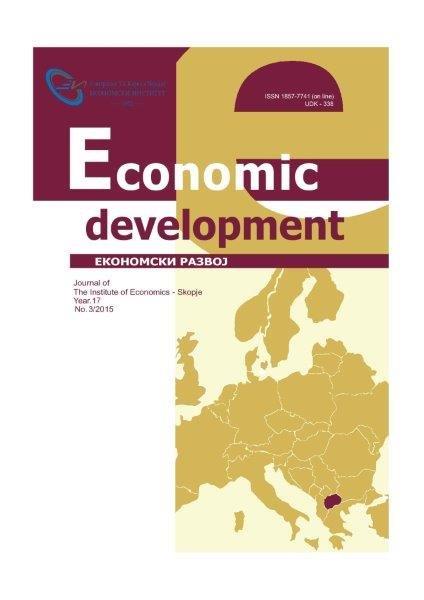Export-led growth in SEE6-facts and recomendations:the case of Republic of Macedonia
Export-led growth in SEE6-facts and recomendations:the case of Republic of Macedonia
Author(s): Gligor Bishev, Tatjana BoshkovSubject(s): National Economy
Published by: Економски институт - Скопје
Keywords: export; competitiveness; real exchange rate; Macedonia
Summary/Abstract: Globalization brings the threat of a weakened SME sector, since its role in (direct) exporting is less than proportional to its size, and in the same time it can also increase the importance of a strong SME sector. The recommendations are on building relationships with financial institutions, especially with banks, to facilitate funding to SMEs. In this context, it is useful to identify where SMEs are dealing in foreign currency and seek opportunities to provide value-adding advice in areas such as managing foreign exchange risks and forecasting currency needs. The key factors for realization of these aims are innovation and knowledge that would help for increasing competitiveness with support of real exchange rate by stimulating the growth of export, too. This can contribute for sustainability of the economic growth and economic integration especially of small economies on which this paper is mainly focused with special emphasis on Macedonia. Because of the fact that Southeastern European countries rely mainly on exchange rate anchors to reduce inflation, the appreciation of the real exchange rate among countries in the region is significant, although it is slightly lower when compared to countries in the EU member states. As a result, the SMEs of these countries suffer from loss of competitiveness. This can be clearly seen from the movements of the deficit on their current account, which are important in all these countries. Using the exchange rate as anchor for inflationary expectations, on long run have been effective so far, producing a low and stable inflation rates. However, in periods of low inflation and deflationary pressures, exchange rate anchors do not allow sufficient space for fiscal and monetary stimulus. In this respect, policy makers are under following dilemma: to deviate from exchange rate anchor and increase the space for fiscal and monetary stimulus; to accelerate structural reforms and competitiveness and on short run deepen the recessionary pressures; and to increase foreign debt and thus increase scope for fiscal and monetary stimulus while preserving the exchange rate anchor. Economic policies can be instrumental for growth in the near- and the medium-term in SEE6. On the fiscal side, sustained reform effort is needed to address structural rigidities in the budgets of SEE6. Priorities include: changes in the composition of public expenditure toward investment and away from wages, public expenditure targeting and prioritization as well as improvements in revenue collection and the broadening of the tax base, among others. On the monetary policy side, with regional inflation at a very low 1.2 percent and big output gaps remaining, some scope for short-term easing of monetary conditions exist, especially in those countries where deficits have begun to decline. Above facts and real situations are our challenges for making analysis and contribution in this area.
Journal: Економски Развој - Economic Development
- Issue Year: 17/2015
- Issue No: 3
- Page Range: 277-304
- Page Count: 28
- Language: English

